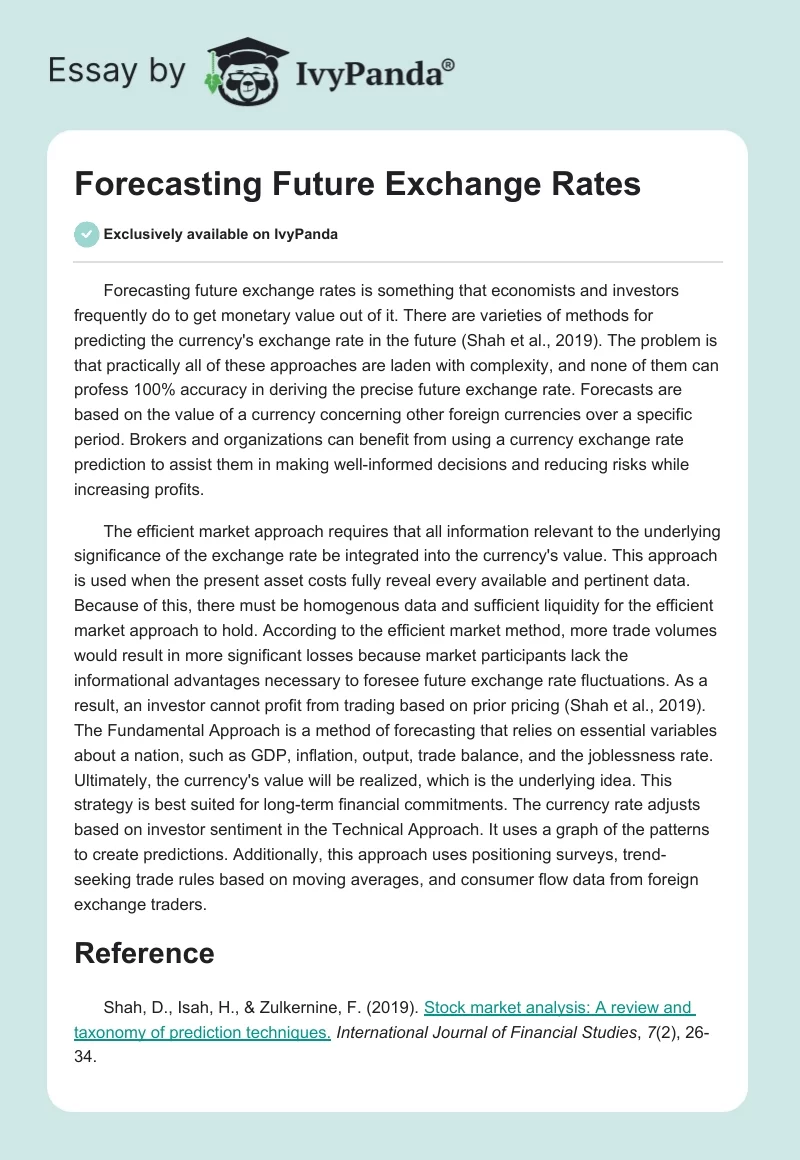Forecasting future exchange rates is something that economists and investors frequently do to get monetary value out of it. There are varieties of methods for predicting the currency’s exchange rate in the future (Shah et al., 2019). The problem is that practically all of these approaches are laden with complexity, and none of them can profess 100% accuracy in deriving the precise future exchange rate. Forecasts are based on the value of a currency concerning other foreign currencies over a specific period. Brokers and organizations can benefit from using a currency exchange rate prediction to assist them in making well-informed decisions and reducing risks while increasing profits.
The efficient market approach requires that all information relevant to the underlying significance of the exchange rate be integrated into the currency’s value. This approach is used when the present asset costs fully reveal every available and pertinent data. Because of this, there must be homogenous data and sufficient liquidity for the efficient market approach to hold. According to the efficient market method, more trade volumes would result in more significant losses because market participants lack the informational advantages necessary to foresee future exchange rate fluctuations. As a result, an investor cannot profit from trading based on prior pricing (Shah et al., 2019). The Fundamental Approach is a method of forecasting that relies on essential variables about a nation, such as GDP, inflation, output, trade balance, and the joblessness rate. Ultimately, the currency’s value will be realized, which is the underlying idea. This strategy is best suited for long-term financial commitments. The currency rate adjusts based on investor sentiment in the Technical Approach. It uses a graph of the patterns to create predictions. Additionally, this approach uses positioning surveys, trend-seeking trade rules based on moving averages, and consumer flow data from foreign exchange traders.
Reference
Shah, D., Isah, H., & Zulkernine, F. (2019). Stock market analysis: A review and taxonomy of prediction techniques.International Journal of Financial Studies, 7(2), 26-34.

